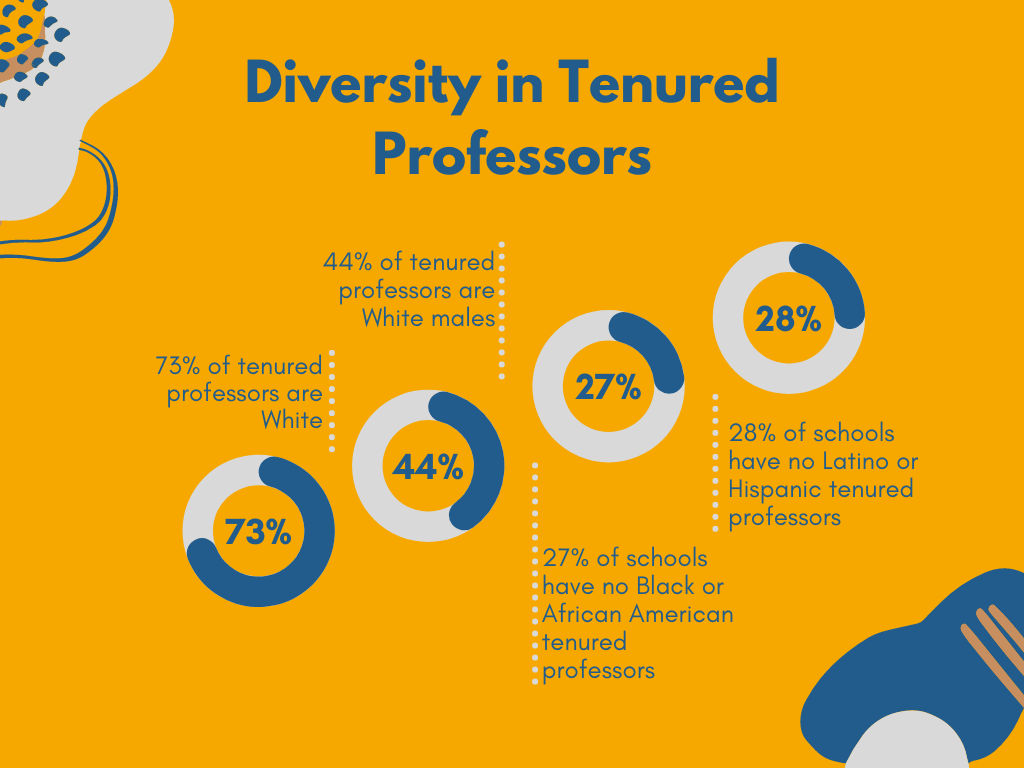
As the world becomes more aware of the importance of diversity, it seems that academia is falling behind when it comes to tenure promotion practices. The vast majority of tenured professors in colleges and universities across the country are white males. What does this mean for students, universities, and companies looking to hire new graduates? Let’s take a closer look.
What Is Tenure?
Tenure is a practice that is used almost exclusively at colleges and universities, so you may not be familiar with what it is or how it works. Essentially, tenure is a distinguished position in academia that ensures a lifetime job guarantee.
Tenured professors cannot be fired, regardless of how controversial their research or writing might be. This allows them to explore new ideas without having to worry about job security, which is considered essential to innovation in academia.
Earning tenure involves a rigorous process. Associate and assistant professors who have already earned their PhD, published research, taught classes, and made serious contributions to their field have to apply for tenure track positions. Once they have been hired, they will be evaluated by their peers and the administration for the next five to seven years.
During this time, professors have to go above and beyond to show that they are positively impacting students, the university, and their field. This means speaking at conventions and conferences, mentoring and advising students, developing new curriculum, publishing in prominent journals, and much more. Professors who want to be tenured have to demonstrate their commitment to the school and their field.
Why Tenured Professors Are Good For Students
For students, there are some advantages to being taught by a tenured professor. Tenured professors are considered leaders in their field, which means they will be teaching cutting-edge material and pushing boundaries. These professors also have the academic freedom to explore provocative topics, which provides new learning opportunities for students.
In addition, unlike lecturers or other instructors, tenured professors are working full-time on campus, which means they may be more available for office hours, mentoring, and collaborative research projects.
A Lack of Diversity in Tenured Positions

We analyzed data from all 2,062 schools in the country that report their diversity stats to the governmental database, called IPEDS. It probably comes as no surprise that there is a lack of diversity among university instructors and tenured positions. In fact, 73% of all university instructors are white, and 44% are white males. To make matters worse, 27% of schools do not have any Black or African American tenured professors, and 28% don’t have any Latino or Hispanic professors. For students, encountering diversity is an important part of the college experience, but that isn’t necessarily being reflected in faculty tenure practices.
Students who attend diverse universities have the opportunity to learn about different perspectives and have their own assumptions challenged. Simply put, we learn more from people who are different from us. Having these experiences, which can be uncomfortable at times, also helps to prepare students to be a part of a diverse workforce. Technology today allows companies to build a global team, and graduates will be expected to work in these diverse environments and be able to contribute valuable ideas.
When there is a lack of diversity and representation, some students can feel like they don’t belong. This can have a significant impact on their academic experience and ability to thrive at school. It is empowering and encouraging to be taught by people who look like you and to know that members of diverse populations are leaders in their fields.
Schools with Strong Faculty Diversity
While much of the world is working on increasing diversity, the majority of tenured professors remain white males. However, there are some schools that have prioritized diversity and managed to assemble a faculty that is more representative.
Here are a few outstanding schools where women make up the majority of the faculty:
- Molloy College – 76% women of 123 faculty members
- George C Wallace Community College – Dothan – 69% women of 104 faculty members
- Jefferson State Community College – 68% women of 106 faculty members
- Anne Arundel Community College – 67% women of 116 faculty members
- Community College of Rhode Island – 66% women of 200 faculty members
As you may have noticed, the list is mostly community colleges. When it comes to four-year institutions, men continue to be hired with more frequency than women.
When it comes to race and ethnicity, these outstanding schools are breaking the mold:
- Clark Atlanta University – 90% non-white of 120 faculty members
- Prairie View A&M University – 87% non-white of 135 faculty members
- Texas Southern University – 87% non-white of 216 faculty members
- Tuskegee University – 87% non-white of 107 faculty members
- University of the District of Columbia – 86% non-white of 104 faculty members
The numbers make it clear that white, male professors are more likely to be promoted to tenure track positions and eventually earn tenure. Ultimately, this creates a less enriching and representative environment for students and fails to prepare them for a diverse workplace. It is in current and future students’ best interest to look for schools that prioritize diversity and are able to actually demonstrate follow-through and results with diversity initiatives. Even as schools hire more diverse professors, it will take time (years, in fact) for that diversity to trickle up into the tenured faculty headcount. But colleges and universities need to start today to make an impact for the future.
